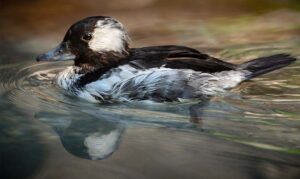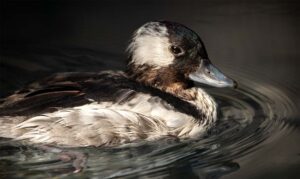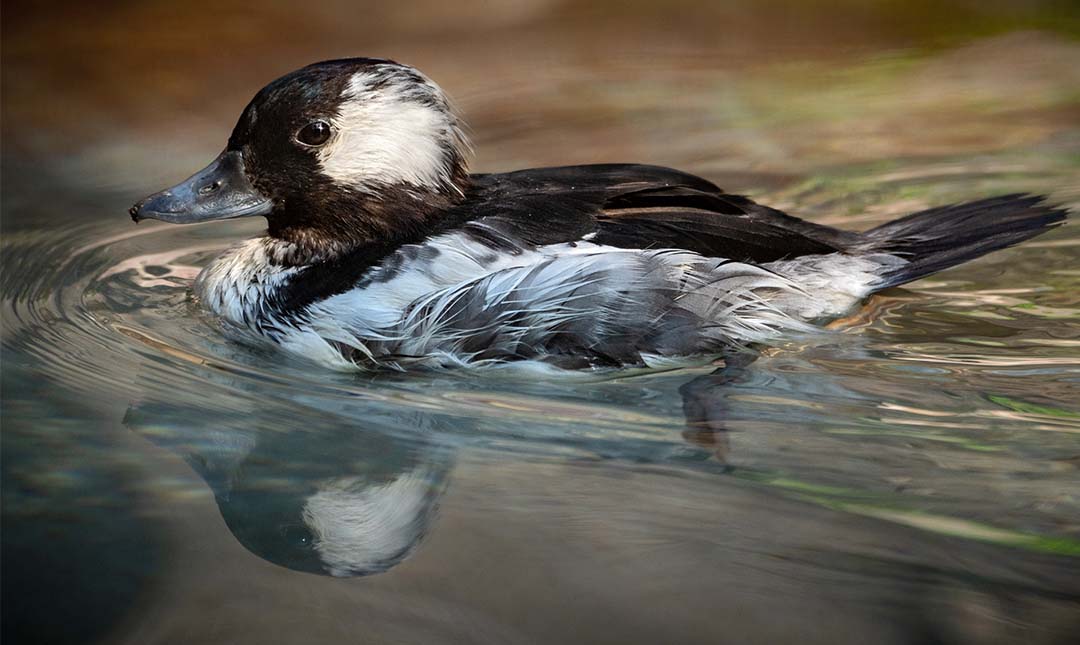About
The bufflehead is North America’s smallest duck, measuring just over one foot long and weighing about one pound. Named for the rounded shape of their heads, these diving ducks spend most of their time in the water and seldom walk on land. They feed by plunging underwater for 12 to 25 seconds at a time and swallow their prey underwater. They often dive in groups of up to 10 birds, with a designated sentry keeping watch on the surface while the others feed. To dive, they compress their feathers to squeeze out air. Only their feet are used to dive. Legs set further back on their bodies is an adaptation that helps them to propel themselves underwater and swim on the surface. To remain underwater longer, these ducks reduce their oxygen consumption, heart rate, and blood flow.
Since their wings are small in proportion to their bodies, bufflehead ducks beat their wings rapidly to fly. Unlike most diving ducks, they can fly straight up out of the water. Just before migration, these ducks undergo a catastrophic molt, losing all their flight feathers and remaining flightless for about three weeks. Once the feathers re-grow, however, they can fly close to 50 mph during migration, traveling high over land and low over water. Mostly monogamous, males sport dramatic white and black plumage to attract mates. The females’ brown coloration helps to camouflage them and protect the nest.


HABITAT
Bufflehead ducks are native to North America. During the breeding season they reside in Alaska, Canada, Wyoming, Oregon, and Northern California, preferring freshwater lakes and ponds. They winter along the Pacific and Atlantic coasts and the Gulf of Mexico.
DIET
In summer, these ducks eat primarily insects and insect larvae, but their diet also includes aquatic plants, invertebrates, and seeds. In winter, they feed mainly on crustaceans, mollusks, and other aquatic invertebrates.
PHYSICAL CHARACTERISTICS
Adult bufflehead ducks typically measure 13 to 16 inches in length and they weigh 10 to 18 ounces. Their lifespan in the wild averages three years, though the oldest bufflehead on record was at least 18 years old.
location within the zoo
You’ll find this bird in the Animals of the Drylands section. See Zoo Map.


